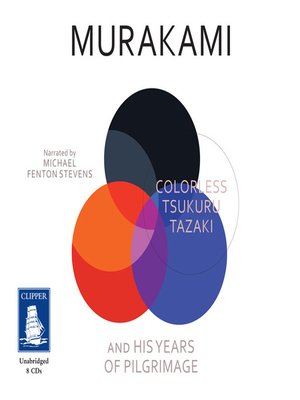
Make no mistake, our ever-melancholic author spares no expense in regards to exploring the profound sadness of Tsukuru's rejection and subsequent trauma. It becomes clear that Murakami himself has a great deal of affection for Tsukuru and his cause that is far-reaching and contagious. Psycho-sexual fever dreams and deals with mystical musicians aside, the tale of Tsukuru's pilgrimage is largely a humanist and quite unexpectedly warm one. However, by the end of the chapter, this fable-like tangent has accessed the existential core of the novel, and it stuck with me long after I had turned the last page. It's a chapter that at first feels so far away from the core narrative that it may as well be released as a short story unto itself. Although, one of the most notable of these surrealisms manifests itself as a chapter-long story told by Haida, a friend of Tsukuru, detailing a bizarre experience in which his father engaged in abstract debate and spiritual dealings with a strange piano player at a hot springs resort. Murakami largely executes these moments through erotic, sometimes eerie dream (or, depending on how you look at it, dream-like) sequences that seem to blur and seep into the crevaces of Tsukuru's reality, giving us an insight into his deepest insecurities and desires.

Rather, he seasons the story with just three or four key moments of otherworldliness that give its fairly grounded narrative that extra boost of surrealist intrigue that may well compel you to finish the book in one sitting, as it did me. With her help, Tsukuru sets off on a pilgrimage of truth that could either mend old wounds, or break him altogether.Īlthough his imagery is as vivid and transportive as ever, the magic realism that has become such a trademark in Murakami's work is used sparingly in “Colorless”. Rejected and lost, his life moves along emptily until he meets a girl who hears his story and tells him it's about time he found out exactly what really happened on that fateful day.

Sixteen years pass, and Tsukuru is still shaken by this event. Then one day, during his second year in college, his friend's coldly, abruptly and without explanation, cut all ties with him. And yet, Tsukuru still feels dispensable. Despite Tsukuru's anomality, the group is as thick as thieves, operating in harmony and forming a perfect whole. The two girls are named Kuro (Black) and Shiro (White), and the two other boys are Aka (Red) and Ao (Blue).

Well, except for Tsukuru, hence the “Colorless”. Comprising of two girls and three boys, each member of the group has an inherent colour in their surname. Tsukuru Tazaki is one of a group of five friends living in Nagoya, Japan, in the early 1990s.


 0 kommentar(er)
0 kommentar(er)
